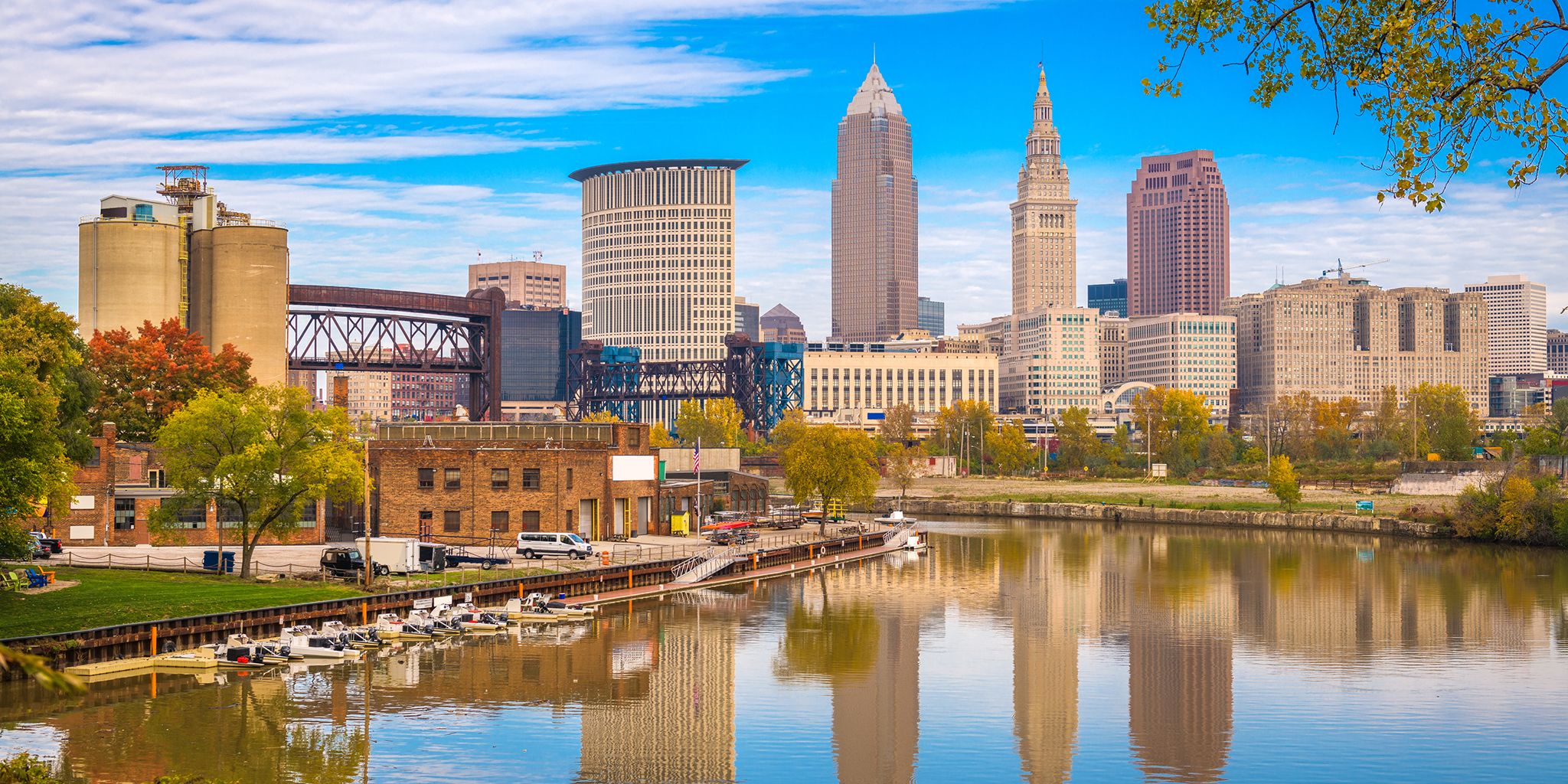Levin College of Public Affairs and Education students reimagine Cleveland’s waterfront

During the mid-90s as Cleveland prepared to celebrate its bicentennial, the city’s waterfront enjoyed a renaissance. The Rock & Roll Hall of Fame opened in 1995. The Great Lakes Science Center followed soon after in 1996. Though the beloved Municipal Stadium had been demolished after the stunning and gut-wrenching departure of the Browns franchise, there was hope. A new football facility would soon rise, and the Browns would play again. The lakefront would live again. And the Greater Cleveland Regional Transit Authority, or RTA, was planning a way to connect Clevelanders to the action.
In July 1996, RTA’s Waterfront Rapid Line opened to great fanfare. Beginning at Tower City, the train traveled just south of Cleveland’s then-Municipal Lot and through the east bank of the Flats, becoming a major attraction. But despite its initial success — ridership soared to 1,000,000 annually in the late 90s — the project, a $70,000,000 legacy project of the city’s 200th anniversary, has seen declining usage through the years. Today, it operates only during Browns home games and special events like the recent solar eclipse.
Still, there’s so much potential. So says 17th Street Studios, a group of students in CSU’s Levin College of Public Affairs and Education Master’s of Urban Planning and Design program. The team, led by instructors Professor Tom Hilde and Jim Kastelic, spent eight weeks, alongside Cleveland officials, to conduct an extensive study that envisions “transit-oriented development that fosters livable, walkable, and connected communities.”
“A waterfront that offers more people-centered amenities, embraces equitable housing density, and is integrated into a larger transit network will reinforce transit demand, creating a virtuous cycle that supports regular [Waterfront Line] service,” the group said in its vision statement.
That includes resuming the line’s daily operations, rezoning for future land use, investing in public green spaces, and redesigning roads along the line to support cyclists, pedestrians, and drivers.
“We are fortunate to not only have a great institutional partner like CSU in our own backyard, but also students who are engaged and want to apply their skillsets to local projects like this,” the City said in a statement.
“When government and educational sectors work together, everyone benefits.”
The team, along with Hilde and Kastelic, included students Connor Brentar, Alahjanai Carlisle, Taviana Carr, Christine Fergus, Elizabeth Kravanya, Nate Lull, EJ McGorty, John Miesle, Sam Munro, Jody Olbrecht, Alex Ordodi, Kelsey Phillips, Hanna Sauberan, Krystal Sierra, Celina Sotka and Mae Thompson.
Read more about the project and the full study at revivingourwaterfrontline.com.
